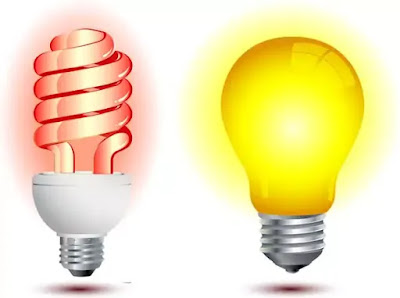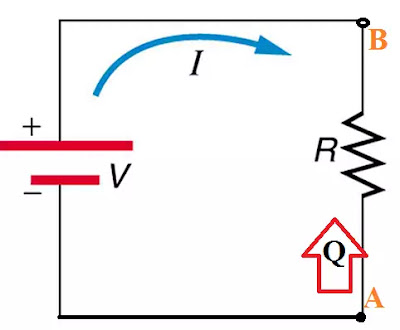Well, what is Electrical Energy.? How does it work? To better understand all these concepts of Electrical energy, let us discuss some basics about Energy. Energy is nothing but the ability to do any work. Where work is done when a force moves an object from one position to another. We use energy every day, which is available in all different forms.
Electrical energy is also one of the forms of energy that’s stored in the electric field by a charged particle. Electric fields are simply areas surrounding a charged particle. In other words, charged particles create electric fields that exert force on other charged particles within the field.
Electrical Energy Definition
Electrical Energy is defined as The form of energy caused by the movement of electric charges (electrons) from one point to another, then such energy is known as electrical energy. In other words, We can say that electrical energy is work done by the moving charges or (electrons) in the electric field.
As we explained above, Energy is the ability to do work or apply a force to move an object from one position to another. So in the case of electrical energy, that force is the electrical attraction or repulsion force between the charged particles.
Electrical energy can be either potential energy or kinetic energy. But it’s usually encountered as potential energy, which is energy stored due to the relative positions of charged particles in the electric fields. The movement of charged particles through a conducting medium (conductors or wires) is called Current Electricity.
There is also a concept of Static electricity, which results from the separation of positive and negative charges. So, Static electricity is the form of electrical potential energy, Whereas Current electricity is the form of Kinetic Energy. If sufficient charge builds up, then the electrical energy may be discharged as a spark (or even lightning), which has electrical kinetic energy.
How does Electrical Energy work?
To better understand the concepts of Electrical Energy, it is essential to know how Electrical Energy works. Basically, electrons and protons are very important to make the electricity to work.
So the basic working principle is that electrons in copper wire are free to move. Each electron carries a negative charge. So It’s movement is due to attractive forces between the electron and positive electrical charges (such as protons and positively charged ions) and repulsive forces between the electron and negative charges (such as other electrons and negatively-charged ions).
In other words, the electric field surrounding a charged particle (an electron, in this case) exerts an attractive or repulsive force on other charged particles, which causes them to move and thus do work. Any charged particles may produce electrical energy, including electrons, protons, atomic nuclei, positively charged ions, anions (negatively-charged ions), and so on.
Electrical Energy Formula
To develop Electrical Energy formula, Let us consider a simple circuit that contains an energy source (battery), a Resistance, and a conducting wire to complete the path for current.
Let us assume the potential difference between point A and Point B is V volts. If a charge Q coulomb travels from point A to B in time t sec, and Current I amp is flowing through resistance R in the circuit. Then work done by the charge will be V*Q joules.
Electrical Energy Units
Usually, 1 kWh is known as 1 Unit of Electrical Energy. kWh is also known as the Board of Trade (B.O.T) unit.
Since, 1 kWh = 1000*60*60 watt-secSo, 1 kWh = 3600000 Joules
Electrical Energy Examples
Electrical energy is used for the working of electrical appliances such as to light a bulb or power a computer is energy that is converted from electric potential energy. This potential energy is converted into any type of energy (such as heat, light, mechanical energy, etc.). A battery is another source of electrical energy, except the electrical charges may be ions in a chemical solution rather than electrons in a metal.
Biological systems are also using electrical energy. For example, hydrogen ions, electrons, or metal ions may be more concentrated on the side of a membrane, setting up an electrical potential that can be used to transmit nerve impulses, and move muscles.
Here are some specific examples of electrical energy.
- Electrical energy is used to power up a light bulb: When a lamp is plugged into a wall outlet. Then current moves from the wall outlet (source) to the light bulb through the conducting wire. Light energy is then created when the electric charges slow down in the filament so it can light the bulb.
- Lightning is another example of electrical energy: When the negatively charged particles are separated from the positively charged particles. A charge potential develops from this separation. When the separation is fairly high, then discharge takes place. This leads to the flow of current in the atmosphere. It is the form of lightning also another example of Electrical Energy.
- Batteries are also sources of electrical energy: In-car batteries, the chemical reaction creates an electron that provides electrical energy to the circuits of the car. Also in phone batteries, the stored chemical energy supplies the power to phone circuits in the form of electrical energy so that the phone operates.
- When our bodies break down food to produce ATP energy: Our bodies convert ATP energy into electrical energy. Then the electric charges move through our special nervous system cells to make our heartbeat.
- Some other specific examples of electrical energy include alternating current (AC) and direct current (DC), capacitors, and the energy produced by electric vehicles.
Read More Articles:
- Construction and Working of RVDT
- Transformer interview questions with answer
- Power Factor Correction techniques
- Surge impedance loading (SIL) of Transmission line
- What is power factor and why it is important
- Involutory matrix and its properties
- Theory and working of Star-Delta Starter
- Notch filter – Theory, circuit design and Application


